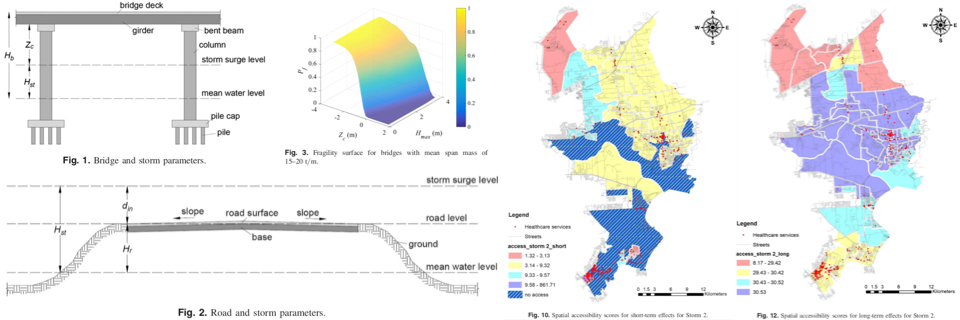
HU – Impact of Coastal Hazards on Residents’ Spatial Accessibility to Health Services
Georgios P. Balomenos, Yujie Hu, Jamie E. Padgett, and Kyle Shelton
Article first published online: 1 DEC 2019 Journal of Infrastructure Systems
DOI: 10.1061/(ASCE)IS.1943-555X.0000509
ABSTRACT: The mobility of residents and their access to essential services can be highly affected by transportation network closures that occur during and after coastal hazard events. Few studies have used geographic information systems coupled with infrastructure vulnerability models to explore how spatial accessibility to goods and services shifts after a hurricane. Models that explore spatial accessibility to health services are particularly lacking. This study provides a framework to examine how the disruption of transportation networks during and after a hurricane can impact a resident’s ability to access health services over time. Two different bridge-closure conditions—inundation and structural failure—along with roadway inundation are used to quantify posthurricane accessibility at short- and long-term temporal scales. Inundation may close a bridge for hours or days, but a structural failure may close a route for weeks or months. Both forms of closure are incorporated using probabilistic vulnerability models coupled with GIS-based models to assess spatial accessibility in the aftermath of a coastal hazard. Harris County, an area in southeastern Texas prone to coastal hazards, is used as a case study. The results indicate changes in the accessibility scores of specific areas depending on the temporal scale of interest and intensity of the hazard scenario. Sociodemographic indicators are also examined for the study region, revealing the populations most likely to suffer from lack of accessibility. Overall, the presented framework helps to understand how both short-term functionality loss and long-term damage affect access to critical services such as healthcare after a hazard. This information, in turn, can shape decisions about future mitigation and planning efforts, and the presented framework can be expanded to other hazard-prone areas.
Read the full publication at Journal of Infrastructure Systems